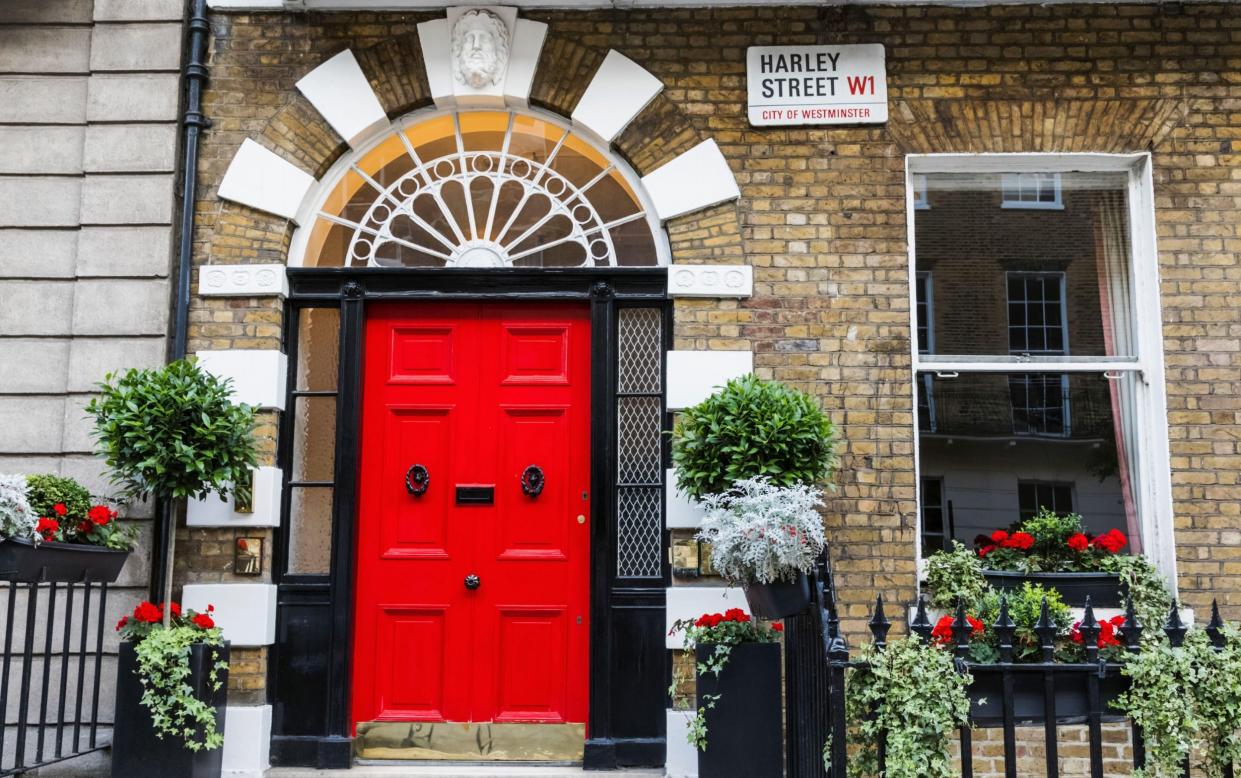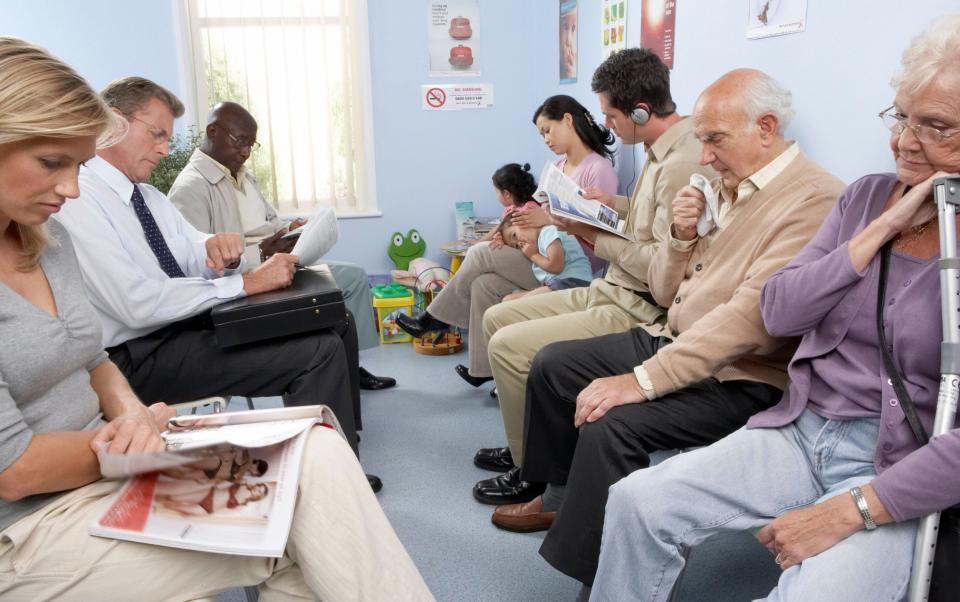The rise of the private GP and what you need to know before you book one

When a small lump appeared under her 14-year-old daughter’s armpit last month, Bridget Geehan didn’t suspect anything sinister but still wanted it checked. Using an app on her phone she booked a private GP video appointment for that same morning.
“Sure enough, the doctor inspected the lump on screen, reassured my daughter it was a minor infection, and recommended a topical cream we bought from the high street chemist,” explains Bridget.
“It was ‘job done’ within four hours. If I’d phoned my local London surgery I’d likely have waited 20 minutes for a receptionist, then at least a week for an appointment, and it would have involved taking time out of work and school to attend. This way there was no hassle, stress or waiting.”
Turning to the private sector for primary healthcare is increasingly common. A 2023 YouGov poll reported that one in six of us have used private healthcare, and with GP waiting lists at an all-time high (1 in 5 patients wait more than 2 weeks to see a doctor) – it’s no wonder.
Bridget, who works in media, is fortunate that her work’s health insurance includes access to an on-demand GP. But even hard-working families, paying out of their own pocket, may now feel it’s “safer” (or at least more convenient) to go privately. How did we get here?
Professor Kamila Hawthorne, chair of the Royal College of GPs, blames “years of underfunding and poor workforce planning in general practice” for the current NHS situation.
“We are buckling under the strain of an escalating workload but with 642 fewer GPs than we had five years ago,” explains Prof Hawthorne. She says that each NHS GP is now responsible for 2,294 patients on average – 260 more than they were six years ago.
“This is unsustainable: patients can’t always get the access and care they want, and in increasing numbers people are pushed towards private medicine. While we are saddened by these rising figures, we’re also not surprised,” she adds.
“We share patients’ frustration… But this is not the fault of hardworking GPs. General practice keeps the NHS upright, but it has been allowed to fall into neglect.
“Fundamentally, we need more GPs. Our manifesto for the General Election outlines seven priorities for the next government – including funding to recruit and train more new GPs and retention initiatives to encourage more experienced GPs to stay in the profession.”
In the meantime, if hanging on the line for hours while your GP surgery tells you why your call is so important to them is driving you to distraction, here are some things to think about if you’re considering paying…

What are the benefits of seeing a private GP?
The obvious difference is being able to access a doctor quickly, at a time that is convenient. But it doesn’t end there. “The main advantage of paying is the time you get in the actual appointment itself,” explains Dr Dev Patel, a former NHS GP who now mainly works in the private sector. “An average NHS appointment is ten minutes, and you can only look at one problem in that time. In the private sector you get at least 15, sometimes up to 30 minutes, to get a fuller understanding of the problem.”
“Access to other services is another thing. If someone is paying to see you privately they’re probably more likely to pay for additional services such as scans (or imaging), or certain blood tests that aren’t routinely available on the NHS. Then there’s the speed of results. For a skin biopsy in my private clinic, the patient will have the result within 72 hours. With the NHS, some reports could take three months plus.”
One 51-year-old patient who turned to the private sector is Lisa Scott, a Hertfordshire mum. “My health issues are slightly complicated: I’ve got high blood pressure and after a routine mammogram revealed a benign lump I was advised to come off my HRT. While the NHS were brilliant over the mammogram findings, when I wanted to learn more about my BP and HRT I was sent round the houses and felt lost in the system. What I appreciate about my private health insurance is talking about different issues to just one doctor to consider holistically. I feel lucky I can pay, but I don’t feel guilty doing so – if anything, I hope I’m relieving pressure on the NHS.”
What are the drawbacks? Are the doctors just as good?
All doctors in the UK, both private and NHS, are bound by the same regulations and standards of care. But one significant difference is that private GPs won’t have automatic access to your medical records (as an NHS one would) – it’s down to the patient to share access, either by showing them the information stored on the NHS app if they have it, or by sharing them via the online medical records system, but this is dependent on what software the private GP has (whether they have a compatible online records system). They can also request for their NHS surgery to email their records, which they would then be able to show their private GP.
So consultations often rely on the patient being able to explain their health background and any medicines they’re taking or have taken previously. However, most private GPs do ask if you’d like them to send the records of your appointment to your registered NHS GP, if you feel happier knowing they are all in one place.
If you are prescribed antibiotics or other medicines privately, you can collect them from a chemist as you normally would, but the cost is generally slightly more (it varies depending on the medicine but can be between £15-£20). NHS prescriptions are standardised at £9.65 in England, and in Scotland, Wales and Northern Ireland are free.
You’ll typically pay extra for blood tests or other diagnostic procedures that are needed, though some providers offer packages that include some of these expenses.
If you see a private GP are you ‘locked into’ the private system for further treatment?
The NHS won’t suddenly become unavailable to you if you have started with a private GP, but neither does a referral from a private GP mean you can jump the queue and get to an NHS consultant quicker.
Many patients who are covered by full private medical insurance do choose to stay within the private system for any onward care. Others, who might have only used a private doctor for diagnostics (but aren’t covered by a full healthcare policy) might opt to self-fund any further care.
If your care plan post-private GP appointment seems too expensive, you can still switch back to the NHS. Private GPs can write recommendations for referrals, providing the patient is eligible for NHS referral (this will depend on your area). But the British Medical Association (BMA) believes it’s best practice for patients to be referred for specialist treatment by their NHS GP because they know your medical history and can advise you if a referral is necessary.
So it could be possible that you might need to book an NHS GP appointment after all (which might feel like being back at square one) and then you may need to go through the diagnostic process once again to see if your NHS doctor agrees with the private course of action. This varies depending on different private providers and NHS doctors
Accessing private GPs through work
In reaction to NHS waiting lists, more businesses than ever – two in 10 – are looking to offer private medical insurance (PMI) to their staff, according to polling conducted on behalf of the Independent Healthcare Providers Network (IHPN).
What’s more, employees are demanding it. Nataly Burns, an HR director for a legal technology firm, says: “These days, offering PMI as an employee benefit is essential to compete in the market. People expect it, especially Gen Zers used to running their whole lives on quick-demand apps. In employee surveys, PMI with access to a digital GP ranks as the second most important benefit (after pensions) and last year nearly half of our employees (47 per cent) used the digital GP service.”
Last year Tesco – the UK’s largest employer – rolled out access to a virtual GP service to cover all staff members and their households. “It’s been one of the most popular perks,” says one employee who preferred not to be named. “It just gives you peace of mind for yourself and, crucially, your family – as well as making you feel like the company genuinely cares about your wellbeing.”
How to find your own private GP if your workplace doesn’t offer it
While the majority of people who use digital GPs access them through a work scheme, currently an estimated 10 per cent pay for themselves, a number surely set to increase. There are many different companies offering different levels of care, from full private medical insurance – with the added bonus of an on-demand GP app – to one-off private GP appointments.
It’s best to think exactly what your health priorities are and compare the various companies to see what might best suit you. The names AXA, Aviva and Vitality are all big in health insurance, and their policies generally include access to a GP. But if you only want a private GP (and not full medical cover) it’s worth shopping around.
How much do private one-off GP appointments cost?
Policy prices widely vary with appointments typically costing between £30 and £100 for a short appointment. The cheapest private GP appointments are likely to be from online-only providers such as Simply Health. They offer video calls between 8am-10pm and 24/7 telephone appointments which are not capped in terms of time.
Unlike private medical insurance (PMI), Simply Health’s low-cost health or cash plans are available from just £20 a month – and they don’t mind about pre-existing conditions (some PMI do – always read the small print). Another online-only provider is Medicspot which offers video GP services from £29 per appointment, available from 8am-10pm, seven days a week.
HCA Healthcare UK offers virtual appointments, as well as in-person with 15 practices across London, Manchester, Glasgow and Birmingham.
The membership plan offers unlimited access to a private GP for just £32 a month, but outside of the membership plan, individual appointments start at £80 for a 15-minute consultation. So membership could work out cheaper depending on usage.
Some of the bigger private healthcare providers, such as Nuffield Health or Bupa offer pay-as-you-go GPs (a 15-min appointment is £79, rising to £250 for an hour for the latter). They also have more nationwide centres if you prefer a face-to-face option (see online for the closest to you).
Others, like Spire and Circle, have prices that differ per hospital and GP – use their websites to check local prices before you book.
Some high-street pharmacies offer private GP appointments via recommended partners, such as Boots and Livi, but there are a number of independent providers as well.
Can I check if they are safe?
All private GP practices must be registered with the Care Quality Commission (CQC), and should display the logo and their latest rating on their website. You can check how they’re rated and when they were last rated too.
You can also search for specific doctors to ensure they are registered with the General Medical Council on its medical register.
Recommended
Cancer treatment waiting times and what to do if you face a delay

